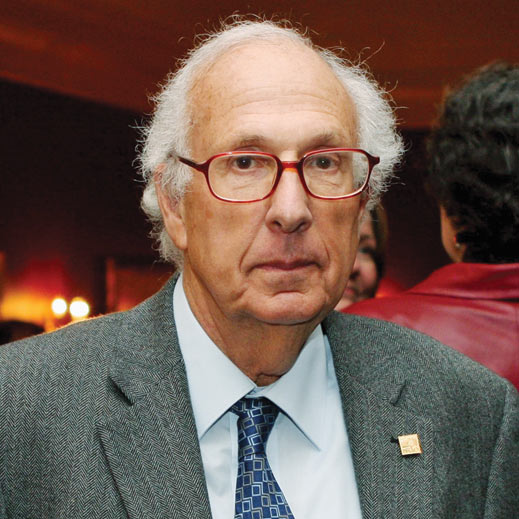When Ken Kellermann ’59 was a sophomore, he and the other physics majors had to take a class in optics. “I thought it was the most boring thing,” he recalls. “It was all 19th-century technology—shine light through one slit and you get diffraction, through two slits and you get interference.”

But interferometry—superimposing waves to extract information from the interference between them—would become central to Kellermann’s pioneering work in radio astronomy, for which he was recently honored with the Bruce Medal from the Astronomical Society of the Pacific.
During his doctoral work in astronomy and physics at Caltech, Kellermann helped build and use a radio interferometer. “I started trying to learn about radio interferometry,” he says, “and I said, ‘Hey, I know this stuff—two radio antennas are just like two slits.’”
After he completed his PhD in 1963 and joined the National Radio Astronomy Observatory (NRAO) in Virginia, Kellermann and colleague Barry Clark, with Cornell’s Marshall Cohen, realized they could use newly commercialized atomic clocks and data recorders to synchronize observations at widely separated radio observatories. The technique, very long baseline interferometry (VLBI), allowed multiple observatories to function as a single instrument, with the resolution of a radio telescope hundreds or thousands of miles across.
Their work sparked massive astronomical advances, making it possible to detect the solar system’s orbital motion and helping to establish the International Celestial Reference System, which led to GPS navigation. VLBI can also track spacecraft and detect minute movements of tectonic plates, and it has been extended to satellite-based antennas, creating radio telescopes that produce the highest-resolution astronomical imaging in history.
Kellermann has also been a leader in establishing international research collaborations—such as a 1969 U.S.-Soviet VLBI project to develop several international radio telescopes. His international experience includes a two-year stint as director of the Max Planck Institute for Radio Astronomy in Germany.
Kellermann is a senior scientist at the NRAO and has served as an MIT Haystack Observatory trustee and as a member of the Physics Department Visiting Committee.
He and his wife, Michele, a former middle school teacher and administrator, live in Charlottesville, near their daughter, Sarah, an attorney and CEO of a nonprofit public policy organization. His sister, Bonny Kellermann ’72, is president of her MIT class and director of special constituencies for MIT Resource Development.
Kellerman’s current projects include studying quasar radio emissions, writing a history of the NRAO and American radio astronomy, and pursuing his lifelong interest in amateur radio (he can be reached via call sign K2AOE).
Keep Reading
Most Popular
Large language models can do jaw-dropping things. But nobody knows exactly why.
And that's a problem. Figuring it out is one of the biggest scientific puzzles of our time and a crucial step towards controlling more powerful future models.
How scientists traced a mysterious covid case back to six toilets
When wastewater surveillance turns into a hunt for a single infected individual, the ethics get tricky.
The problem with plug-in hybrids? Their drivers.
Plug-in hybrids are often sold as a transition to EVs, but new data from Europe shows we’re still underestimating the emissions they produce.
Stay connected
Get the latest updates from
MIT Technology Review
Discover special offers, top stories, upcoming events, and more.